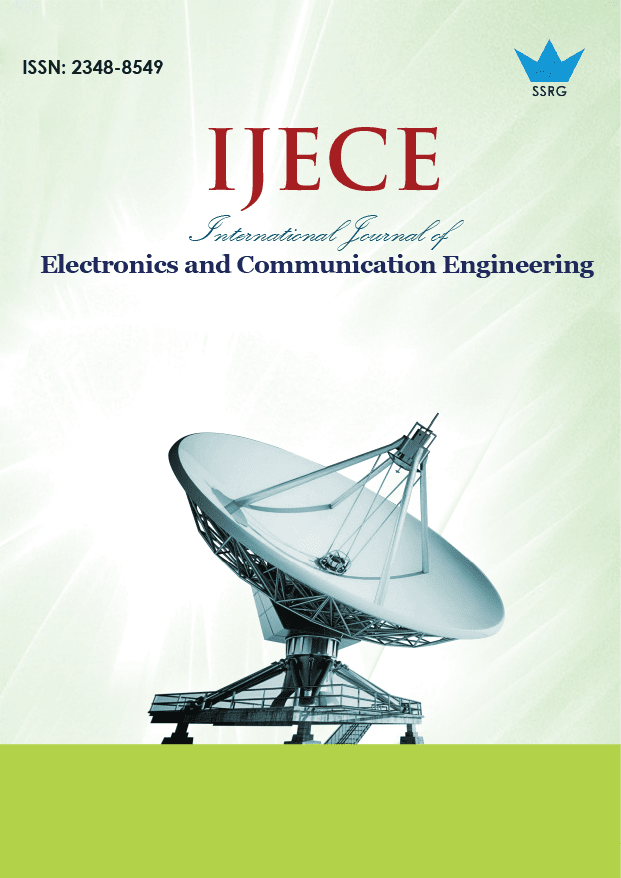Analysis of Low-Power and Area-Efficient Shift Registers using Pulsed Latch

| International Journal of Electronics and Communication Engineering |
| © 2016 by SSRG - IJECE Journal |
| Volume 3 Issue 1 |
| Year of Publication : 2016 |
| Authors : P. Rahul Reddy |
How to Cite?
P. Rahul Reddy, "Analysis of Low-Power and Area-Efficient Shift Registers using Pulsed Latch," SSRG International Journal of Electronics and Communication Engineering, vol. 3, no. 1, pp. 1-4, 2016. Crossref, https://doi.org/10.14445/23488549/IJECE-V3I1P102
Abstract:
Flip-flops is perilous timing elements in digital circuits which have a huge influence on the circuit speed and power consumption. The performance of flip-flop is an significant element to regulate the efficiency of the entire synchronous circuit.This paper recommends a low-power and area-efficient shift register using pulsed latches. Therefore area and power consumption are reduced by substituting flip-flops with pulsed latches. This technique explains the timing problem between pulsed latches through the use of multiple non-overlap delayed pulsed clock signals as an alternative of the conventional single pulsed clock signal. Also the shift register uses a small number of the pulsed clock signals by grouping the latches to more than a few sub shifter registers and using supplementary temporary storage latches.
Keywords:
Area-efficient, flip-flop, pulsed clock, pulsed latch, shift register.
References:
[1] Xiaowen Wang, and William H. Robinson, “A Low-Power Double Edge Triggered Flip-Flop with TransmissionGates and Clock Gating” IEEE Conference , pp 205-208, 2010.
[2] PhaedonAvouris, JoergAppenzeller, Richard Martel, and Shalom J. Wind. “Carbon nanotubeelectronics”.Proceedings of the IEEE,91(11):1772–84, November 2003.
[3] Fabien Pregaldinyet.al., “Design Oriented Compact Models for CNTFETs”, IEEE Trans. Elec. dev. , 2006.
[4] -Flop Based on Signal Feed-Through Scheme”International Journal of Advanced Research inElectronics and Communication Engineering(IJARECE) Volume 3, Issue 11, November 2014.
[5] ManojkumarNimbalkar, Veeresh Pujari“Design of low power shift register using implicit and explicit type flip flop”, Vol 05, Article 05357June 2014
[6] S. Heo, R. Krashinsky, and K. Asanovic, “Activity-sensitive flip-flopand latch selection for reduced energy,” IEEE Trans. Very Large ScaleIntegr. (VLSI) Syst., vol. 15, no. 9, pp. 1060– 1064, Sep. 2007.
[7] S. Naffziger and G. Hammond, “The implementation of the nextgeneration 64 b itanium microprocessor,” in IEEE Int. Solid-State CircuitsConf. (ISSCC) Dig. Tech. Papers, Feb. 2002, pp. 276–504.
[8] H. Partovi et al., “Flow-through latch and edge-triggered flip-flop hybrid elements,” IEEE Int. Solid-State Circuits Conf. (ISSCC) Dig. Tech.Papers, pp. 138–139, Feb. 1996.
[9] E. Consoli, M. Alioto, G. Palumbo, and J. Rabaey, “Conditionalpush-pull pulsed latch with 726 fJops energy delay product in 65 nmCMOS,” in IEEE Int. Solid-State Circuits Conf. (ISSCC) Dig. Tech.Papers, Feb. 2012, pp. 482–483.

 10.14445/23488549/IJECE-V3I1P102
10.14445/23488549/IJECE-V3I1P102